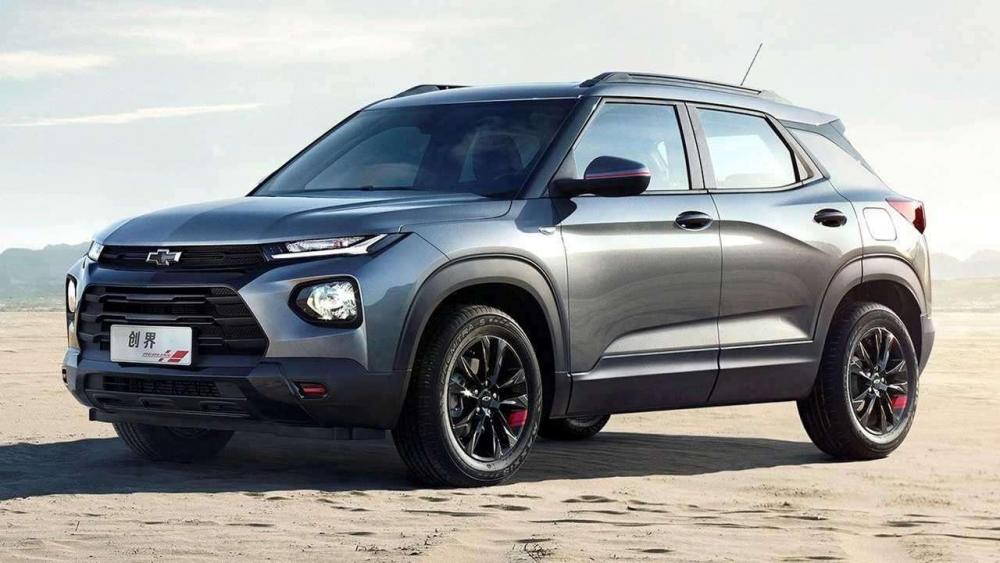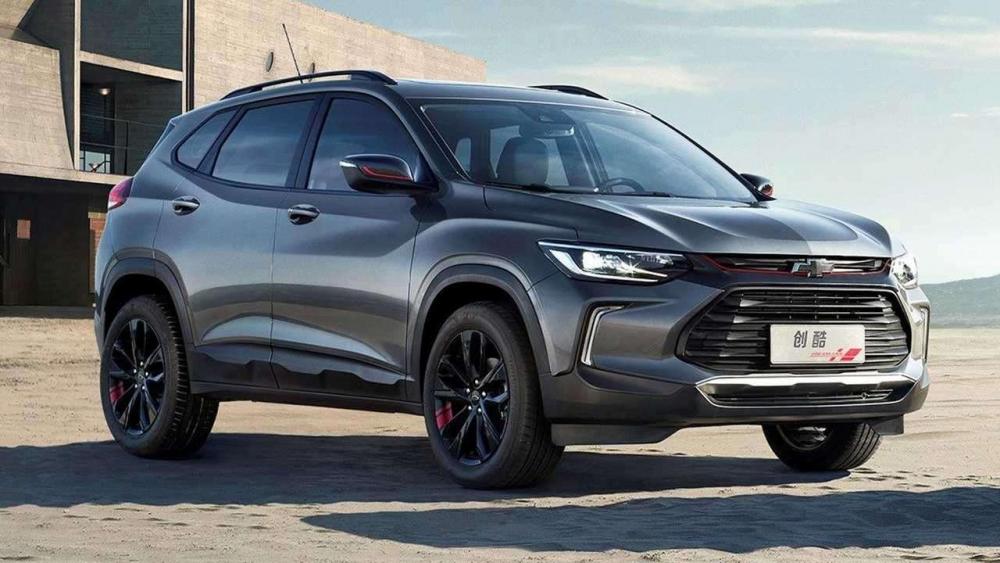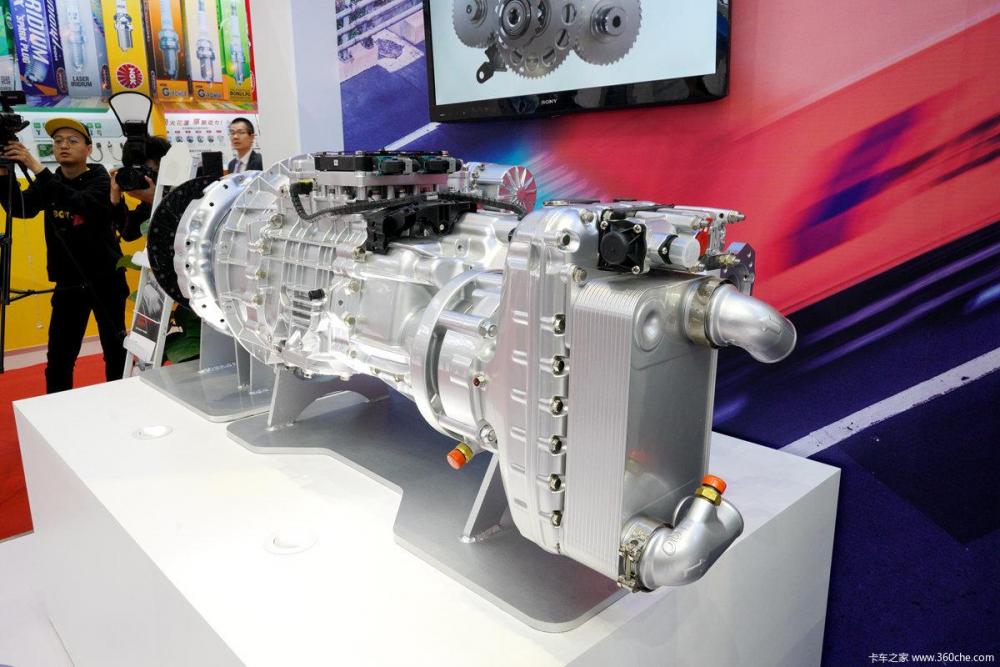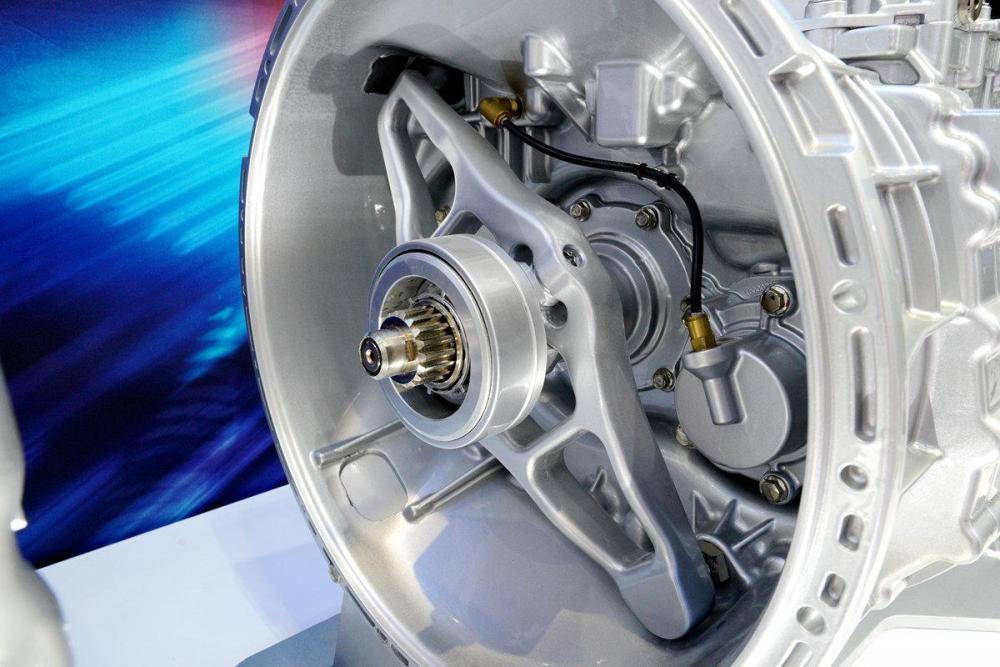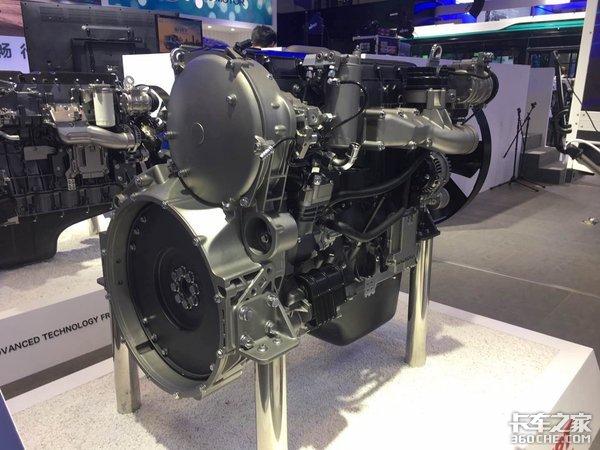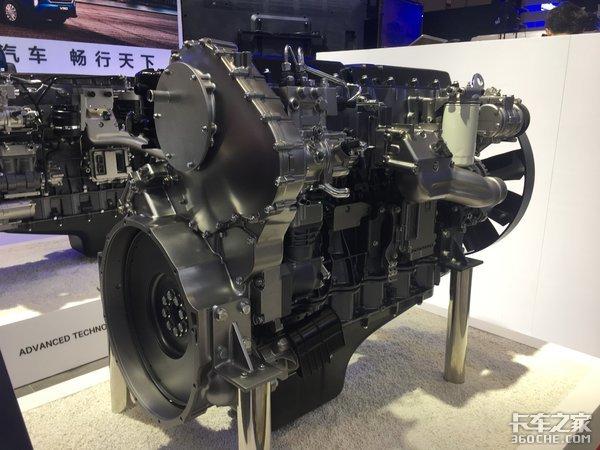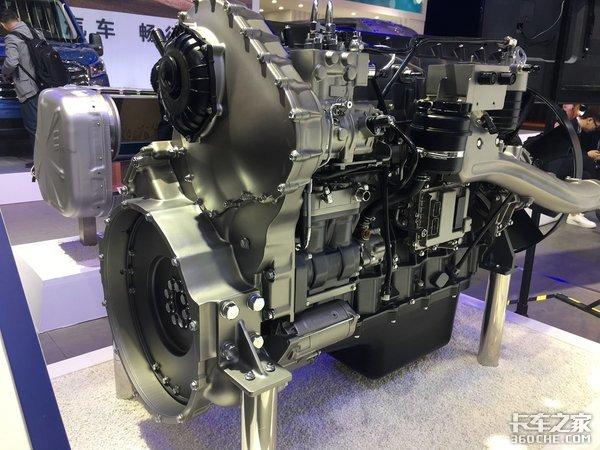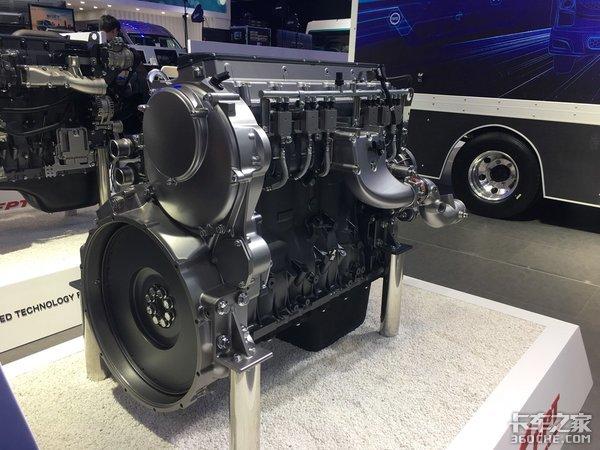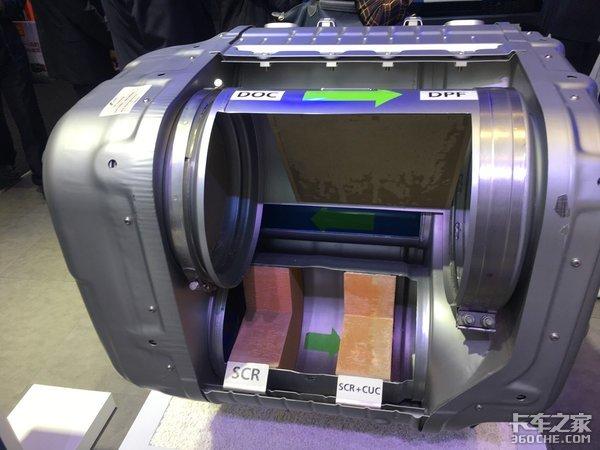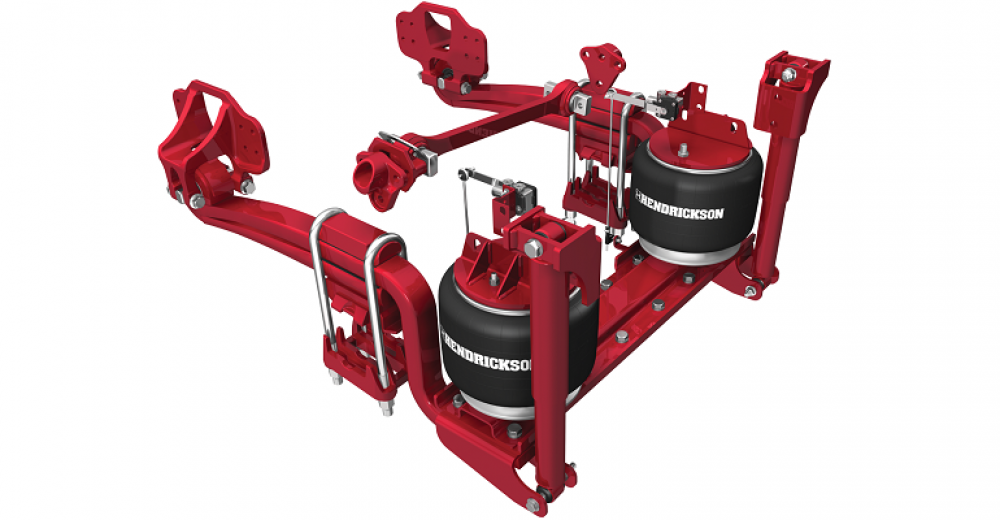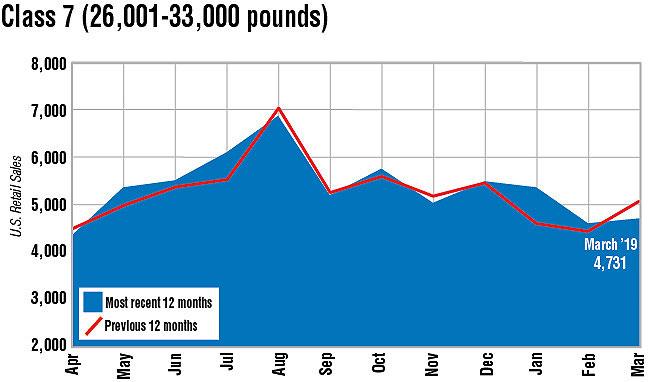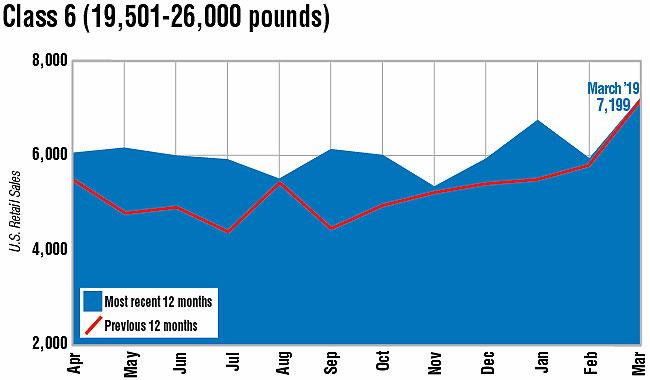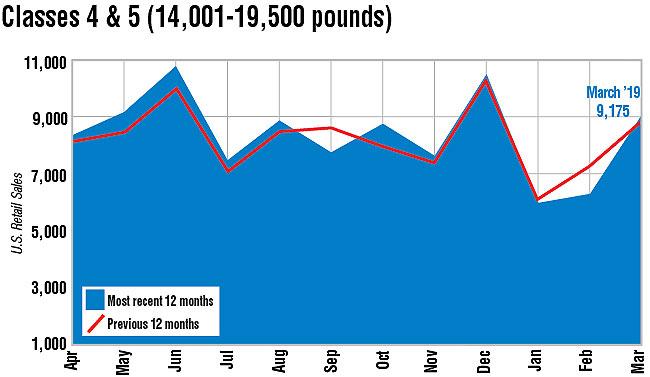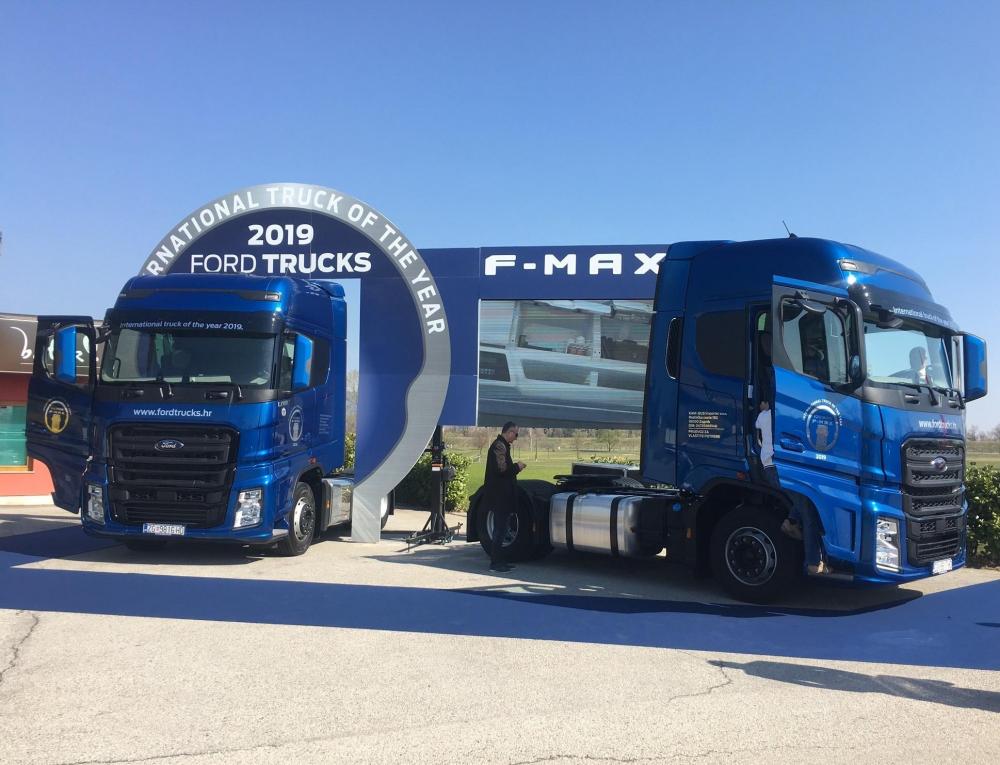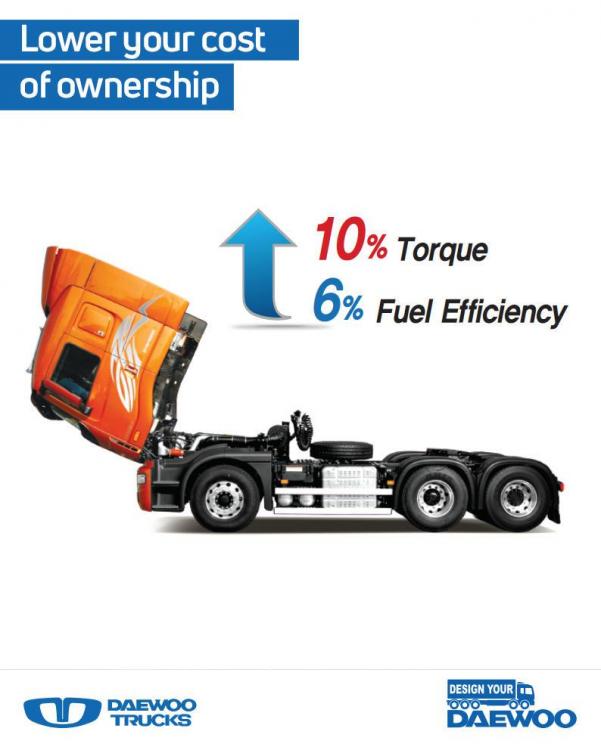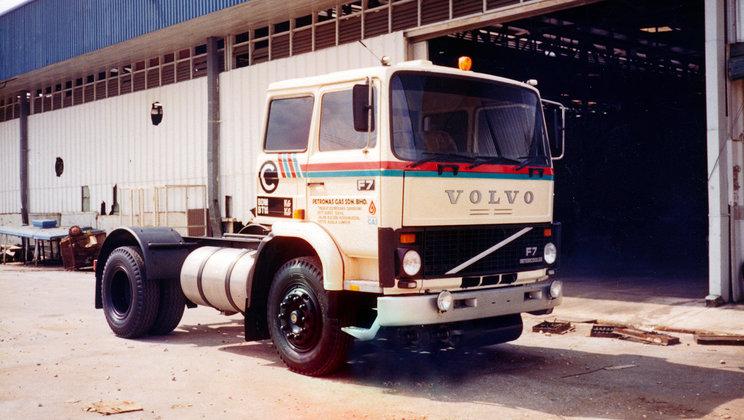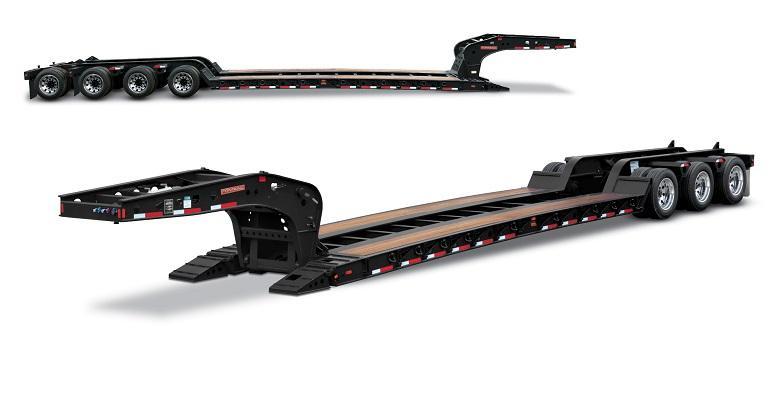
kscarbel2
Moderator-
Posts
18,931 -
Joined
-
Days Won
114
Content Type
Profiles
Forums
Gallery
Events
Blogs
BMT Wiki
Collections
Store
Everything posted by kscarbel2
-
Matt Cole, Commercial Carrier Journal (CCJ) / April 15, 2019 Daimler Trucks North America and Paccar each announced recalls recently affecting approximately 450 total trucks, according to National Highway Traffic Safety Administration documents. Daimler’s recall affects approximately 361 model year 2019 Western Star 4700 and 4900 trucks. In the affected tractors, the odometers are accumulating distance in kilometers, but the odometer display is labeled as being miles. These trucks, therefore, do not comply with Federal Motor Carrier Vehicle Safety Standards for “Control and Displays.” Daimler says the odometer not registering the correct distance travelled could cause driver confusion, as well as possible incorrect assumptions about driver speed. DTNA will notify affected truck owners, and dealers will replace the speedometer for free. Owners can contact DTNA customer service at 1-800-547-0712 with recall number FL-812. NHTSA’s recall number is 19V-171. Paccar’s recall affects approximately 93 model year 2020 Kenworth T680, T800, T880, W900 and W990 models. The rear axles of these trucks may not contain oil, which could cause the bearings, hub and axle shafts to wear, resulting in separation of a wheel end from the axle. The company will notify affected owners, and Kenworth dealers will inspect all of the rear axles for the presence of oil. If no oil is present, the wheel ends will be removed and the bearings, hub and axle shaft will be inspected for damage and replaced if necessary. Owners can contact Paccar customer service at 1-918-259-3258 with recall number 19KWA. NHTSA’s recall number is 19V-176.
-
GM bets it has a GEM of a plan to hit paydirt in emerging markets Nick Carey & Joseph White, Reuters / April 16, 2019 General Motors has spent five years rewriting its playbook for making money in Latin America and the interior of China. Now, it's showtime for the first results of a project code-named GEM, for Global Emerging Market. At events this week ahead of the Shanghai Auto Show, the U.S. automaker is unveiling two small utilities that will be part of a new family of sedans and utilities the automaker forecasts will make up one in five of its global vehicle sales by 2023. This is just the opening salvo in a nearly $5 billion bet by GM to sell up to 2 million technology-laden, modern-looking vehicles annually to consumers who today cannot afford GM vehicles designed for the United States, but may someday as their incomes rise. GM has struggled for years to crack the code for growing profitably outside rich markets, in part because vehicles designed for the U.S. or China's wealthy coastal cities cost too much for developing world consumers. The company has abandoned some Southeast Asian countries and pulled back from Africa because it could not compete. This time around, GM says, through disciplined cost-control it has finally found a way to make affordable vehicles in bulk for emerging markets, loaded with the technology that consumers want and still make a profit. The Chevrolet Tracker and the Buick Encore — not be confused with its American cousin of the same name — are the first tests of a new strategy for engineering vehicles to appeal to buyers in around 40 nations of the world's middle class such as Brazil and Mexico, and the huge developing market that exists within China's heartland. The GEM project involved an unprecedented level of cooperation with GM's Chinese joint venture partner SAIC Motor Corp. GM and SAIC shared engineering costs and collaborated on purchasing, GM executives said. What potential customers will see are vehicles that include amenities such as touch screens, mobile phone connectivity, rear-view cameras and safety features such as automatic emergency braking and airbags. What GM is counting on them not to notice is that the number of options is limited, to reduce complexity in purchasing and manufacturing, or that touches such as fully carpeted trunks are absent. "We may not be the absolute lowest price point in China," GM President Mark Reuss told Reuters at the automaker's downtown Detroit headquarters. "But we're going to be right in that segment where this is a pretty good-sized car... [with] a huge value for what you pay for it." Fewer parts, lower cost The team that set out to build GM's new vehicle family included engineers and designers from 14 different countries, meeting at the automaker's technical center in the Detroit suburb of Warren to hammer out details that were then executed in China and elsewhere, GM executives said. As the basic design of the GEM vehicles took shape, the strategy for where they would be sold changed. GM pulled out of some markets like India and Vietnam that were originally slated to be among the target markets. The challenge GEM project chief engineer Doug Houlihan faced was how to deliver low-cost vehicles that did not look cheap or lack key safety features. Sometimes, that meant spending more. Houlihan gave the green light to spend extra on machines that could weld on the tops of car doors rather than stamping the door in one piece. The extra investment delivered a door that fit smoothly into the roof of the car for a sleeker look. "This gives the customer more than they would expect," Houlihan said. To offset that cost, Houlihan and his colleagues dug into logistics and the supply chain. Shipping some vehicles by sea between Brazilian ports saved money in a market where moving goods by road can be a logistics nightmare. Houlihan said that Brazilian logistics savings more than paid for the extra $2 per vehicle GM invested for a rear axle five times stronger than its predecessor in South America. One GM plant in Brazil took over some work on engines and bumpers that had previously been outsourced, saving $120 per vehicle — a significant figure for a low-cost vehicle. Integrating the head rest on the front seat for some models saved $7 per vehicle. Chinese suppliers are key to the new GM vehicle line, but the automaker is shifting away from relying on Chinese production. GM has tried to localize costs for these vehicles as much as possible which can help offset currency fluctuations that hit markets like Brazil. That can also mitigate the impact of tariffs. U.S. President Donald Trump has escalated trade tensions with China and has threatened a broad tariff on U.S. autos and parts. "You try and tariff-proof yourself and get it as local as you can," GM's Reuss said. GM's new emerging market lineup will face plenty of competition. Chinese automakers are pushing into some of the same countries GM has targeted. Internally, a key test will be how GM applies the cost-saving strategies used in the global emerging market project to other vehicle programs. Houlihan has been named to lead efforts to apply the cost lessons learned from this project to GM's global lineup of crossovers for the Cadillac, Buick, Chevrolet and GMC brands.
-
Chevy revives Trailblazer, Tracker for China Michael Wayland, Automotive News / April 16, 2019 General Motors is resurrecting the Chevrolet Trailblazer and Chevrolet Tracker nameplates for the Chinese market. The company introduced the two small crossovers on Tuesday at the Shanghai auto show. The vehicles are not expected to be imported from China to the U.S. A Chevrolet spokeswoman was not immediately available to comment. Other than their names, the vehicles appear to share little to no DNA with their predecessors sold in the U.S., which GM discontinued in the 2000s. The Trailblazer for China, according to GM, is a compact crossover inspired by the Chevrolet FNR-CarryAll concept, which debuted at the 2018 Guangzhou auto show as the new design language for the brand. In the U.S., the new styling is most notable on the midsize Chevrolet Blazer crossover that went on sale this year. The Tracker, GM says, will be the brand's new small entry-level crossover for China. For the U.S., GM last produced the Tracker, which was badged under several brands, after the 2004 model year. The Trailblazer was last produced for the 2009 model year. .
-
360 Truck / April 16, 2019 Commercial truck transmission has always been one of Eaton’s core strengths, and the company has brought to this year’s show a new generation 12-speed "Endurant" 12-speed automated manual transmission (AMT) developed jointly with Cummins. It features a top gear ratio of 0.77 and double intermediate shaft helical tooth structure design. Bowing to the popularity of hydraulic retarders on heavy trucks, Eaton for the first time in many years has designed the new transmission for the fitment of a retarder. The all-aluminum transmission weighs in at 298 kilograms (657lb), has a maximum input torque of 2,650 Nm, requires 7.5 liters of gear oil, and can be fitted with a rear and bottom power take-off. In addition, this new transmission offers a long 1.2 million kilometer (745,645 mile) oil change interval. .
-
FPT Euro-6 engines launched at Shanghai Auto Show
kscarbel2 replied to kscarbel2's topic in Trucking News
This is a great presentation on FPT's (Iveco's) latest emissions technology mentioned in the article. DOC+DPF+SCR+CUC Diesel Oxidation Catalyst + Diesel Particulate Filter + Selective Catalytic Reduction + Clean-Up Catalyst http://ibb.iveco.com/Lists/Markets/Attachments/59/EURO VI.pdf -
360 Truck / April 16, 2019 The Italian-Chinese truck and engine producing joint venture SAIC Fiat Hongyan Powertrain is exhibiting four Euro-6 emissions engines at the Shanghai International Auto Show. The emissions level is known as National 6 in China. The engine line-up includes both diesel and natural gas variants of the Cursor 9 , plus the Cursor 11 and Cursor 13. Powering Iveco trucks in the global market, Fiat Powertrain's Euro 6 engines utilize the company's highly efficient HI-eSCR technology which reduces the nitrogen oxide content in the exhaust gas without using an exhaust gas recirculation (EGR) system. Without EGR, there is no loss of engine operating efficiency. Instead, maximum horsepower, high torque density and low fuel consumption is achieved. Moreover, the engine turbocharger design of the EGR-free exhaust gas circulation system is simplified, resulting in higher engine reliability and longer component life. The Cursor 9 6 engine has a displacement of 8.7 litres and weighs 835 kilograms (1,841lb). It is available in 290, 320, 350, and 390 horsepower ratings, with torque ratings of 1250, 1400, 1500, and 1600 N.m. respectively. The 11.12 litre Cursor 11, successor to the 10.31 litre Cursor 10, has a weight of 1,050 kilograms (2,315lb). It is available in 390, 430 and 460 horsepower ratings, with torque ratings of 2000, 2050, and 2100 N.m. respectively. The 12.88 litre displacement Cursor 13 weighs 1,230 kilograms (2,712lb) and is available in 480, 520 and 560 horsepower ratings with maximum torque ratings of 2200, 2400 and 2500 N.m. respectively. The natural gas powered Cursor 9 6 natural gas engine weighs in at 870 kilograms (1,918lb) and is available in 340 and 380 horsepower ratings with peak torque of 1500 and 1700N.m respectively. The Cursor 9, Cursor 11 and Cursor 13 all offer 100,000 kilometer (62,137 mile) oil change intervals in on-highway operation, while the Cursor 9 natural gas engine has a 60,000 kilometer (37,282 mile) service interval. FPT's HI-eSCR emissions reduction technology integrates DOC+DPF+SCR+CUC, one of the attractive solutions for heavy truck engines to achieve the global Euro 6 emissions standards. Coupled with the latest developments in ultra high pressure common rail fuel injection and variable geometry turbocharging (VGT), nitrogen oxide emissions can be significantly reduced. .
-
Hendrickson launches HD air suspension for fire, rescue
kscarbel2 replied to kscarbel2's topic in Trucking News
So then what becomes of the FIREMAAX? https://www.hendrickson-intl.com/Truck/Fire-Rescue/FIREMAAX-EX -
Trailer-Body Builders / April 12, 2019 Hendrickson Truck Commercial Vehicle Systems recently introduced ROADMAAX heavy-duty rear air suspensions for fire and rescue vehicles in North America. ROADMAAX will serve as the new rear air suspension for Rosenbauer’s new SA Viper aerial truck, the company said. ROADMAAX is designed for heavy-duty fire and rescue markets with ride quality and equipment protection as its cornerstone features. “ROADMAAX is the future of high-capacity performance suspensions for the fire protection industry,” said Chris Batsch, director of the specialty vehicle business unit for Hendrickson. “This system was designed with a low maintenance, unique suspension geometry providing maximum control, predictable handling and premium ride quality.” The new system was put through rigorous test and validation procedures based on real world road conditions, Hendrickson said, and received “outstanding” feedback on its performance and capabilities. “We are excited to offer another innovation to the fire industry and provide first responders with the products and reliability that they need to do their job.” said Dave Scharphorn, director of sales for Rosenbauer Motors. ROADMAAX is designed to deliver enhanced handling in challenging environments where vehicles encounter sharp turns and unexpected ground and environmental conditions. The integration of Hendrickson’s main support member spring technology, with its wide stance air springs, provides a balance of predictable handling and ride quality over a variety of terrain, the company said. Available initially in capacities of 35,000 pounds per axle at Rosenbauer in North America, ROADMAAX is approved for fire and rescue applications. .
-
Roger Gilroy, Transport Topics / April 15, 2019 U.S. sales of medium-duty trucks in March held steady, settling above 21,000, WardsAuto.com reported. Classes 4-7 hit 21,105 units, down 0.2% compared with 21,135 a year earlier, according to Ward’s. “Nobody is looking for a lot of incremental demand to come out of this space. I think it is largely sated at this point,” one industry analyst said. “Much of what we are going to see is replacement as opposed to people trying to increase fleet size,” he said. “The amount of work is not going to change appreciably through the year.” Year-to-date, sales improved 2% to 56,166 compared with 55,041 a year earlier. “I am calling for a 2.5% gain this year. Again, no surprises,” he said. Class 7 sales fell 6.2% to 4,731. Freightliner notched a leading 43% share on sales of 2,041. Many vehicles in this class are destined for municipal customers, he said, and these include single-axle dumps and work trucks with booms and digger derricks that lift and place utility poles, for example. In related news, Kenworth Truck Co. announced an expanded list of options for its Class 7 medium-duty cabover models. For the Kenworth K370 Class 7 cabover, these options include the Dana Spicer S23-172E 23K high-entry axle, Reyco 23,000-pound rear suspension, Dana 1710 driveline series, 8,000-pound lift-axle pusher, pusher tires and wheels, and upsized park and spring brakes. These options are appropriate for heavy freight delivery, dump trucks, small concrete mixers and cranes, while also opening the door for other vocational uses, such as a larger concrete mixers or 43,000-pound dump applications. The Kenworth cabover has 55-degree wheel cut for a tight turning radius, which aids in maneuverability when operating in crowded urban environments, according to the Kirkland, Wash.-based company, a unit of Paccar Inc. “It will be fun to see [heavier cabovers] come back into the marketplace. In 2005 or 2006, before the housing bubble imploded, I think all the mainstream manufacturers had announced cabovers, and the timing of the introduction could not have been worse,” he said. “It fell apart just as they were getting their trucks to market, so, they tucked tail and ran.” Meanwhile, Class 6 sales were flat at 7,199, or two trucks more than a year ago. Classes 4-5 rose 3.2% to 9,175 compared with 8,892 a year earlier. .
-
Ford Trucks International / April 12, 2019 With Electronic Stability Control (ESC), Ford trucks won't be falling into any black holes. They'll be right on track, whatever happens. #FordTrucks #blackhole .
-
Ford Trucks International / March 19, 2019 The "New Big" Ford F-MAX caused a lot of excitement at the Croatian Road Show! The ITOY 2019 award winner Ford Trucks F-MAX was in Zagreb and Rijeka on March 19 and 21, respectively! .
-
Daewoo Trucks South Africa / April 9, 2019 Daewoo Trucks add robust and high efficiency on our heavy-duty truck applications. Maximum torque and fuel efficiency are improved which provides customers easier and faster maintenance for Daewoo Trucks. .
-
Ford Trucks International / April 13, 2019 The New Big: The Ford Trucks F-MAX was revealed in Hungary with a special product launch ! Excited to share the load of the Hungarian market! .
-
Commercial Motor / April 10, 2019 Turning tighter circles with MAN's Steering Brake .
-
Volvo Trucks Malaysia / April 10, 2019 Shah Alam – Volvo Trucks, one of the world’s largest providers of commercial vehicles, is commemorating its 50th anniversary of achievements and milestones in Malaysia this year. The company was started in Malaysia in 1969 under Federal Auto Industrial Sdn Bhd and a year after the Swedish Motor Assemblies plant had begun operations in the country. Its first product brought into the country in that year was the complete built-up N Series truck, which was a tipper and heavy haulage transporter that also featured the three-point safety belt that was created by Volvo. It was one of the first trucks to have sported this important safety feature. Over the next five decades, Volvo Trucks expanded its footprint through the launching of new truck models, opening of more dealerships across Malaysia, gaining more new customers and introduction of many key aftermarket services and activities to meet the needs of its growing customer base. “Volvo Trucks is extremely glad to be celebrating our 50th anniversary in Malaysia this year. This is one of the most momentous milestones for us and we are very satisfied with everything that we have been able to accomplish over the past five decades. We also feel truly honoured to have the continuous support of the industry and our customers as they have made it possible for us to grow our business in this market,” said Mitch Peden, Managing Director, Volvo Malaysia. Highlights of Volvo Trucks Heritage in Malaysia Laying the foundation in 1969 This year marked the setting-up of Volvo Trucks’ operations in Malaysia and the introduction of the complete built-up N Series tipper and heavy haulage truck. Establishing footprints in the 70s The 70s paved way for a stronger establishment of the brand in Malaysia. The complete knocked-down assembly of the N Series truck was initiated and the 3-point safety belt equipped in all the units, making Volvo the first truck brand to emphasise safety. Over the course of this decade, Volvo Trucks made several breakthroughs including the introduction of the turbo engine used in the F Series truck. It also continued serving the country by delivering the Volvo F88 truck to the Malaysian Army, further cementing its importance in Malaysia. Charting more milestones in the 80s Volvo Trucks’ development into the eighties was built upon the introduction of new innovative technologies and features focused on improved efficiency, performance and safety. The company introduced the Euro 1 engine in the FL10 model and became the first truck brand to introduce the airbag as well as the 6x2 tag axle. With these products, business began to expand and had propelled the arrival of other new models to service the booming transport and logistics sector. Thus, Volvo expanded its portfolio with the arrival of F7, F10, F12, FL10, N10, N12 and NL12 truck models. It also delivered the N10 trucks to the local Fire Department and the first batch of N12 logging trucks to its customers in East Malaysia. Driving progress in the 90s The 90s saw the arrival of the Euro 2 engine and the latest FL10, FL12 and FH12 models and the introduction of its Blue and Gold Service Agreements to serve the customers’ demand for cost-effective preventive maintenance and repairs. In addition, Volvo also introduced its first Breakdown Service Team to ensure that its aftermarket support reaches its customers whereever they are. This was significant as Volvo Trucks continued to expand its network of dealerships across Malaysia. Making impact beyond 2000s The 2000s were significant for Volvo Trucks as it continued to build upon its successes and made bigger impacts in the industry. Realising there was an increasing demand for reliable heavy-duty trucks to meet industry needs, the Volvo FM9 and FM12 models were brought into Malaysia in 2002. This was followed by the launching of its Customer Care Centre (CCC) to provide 24/7 breakdown service support. Playing a bigger role in driving productivity and enhancing road safety, the Volvo Driver Training programme and the annual Fuelwatch Challenge to promote safety and fuel-efficient driving behaviour among truck drivers were also launched. The Volvo I-Shift transmission which uses road grade, speed, weight, and engine load to gauge the optimum time for switching gears to increase fuel efficiency was introduced as one of its latest advancement in trucking solutions. As business expanded, Volvo Trucks’ appointed Dai Lieng Machinery Sdn Bhd as its first private dealer for Volvo in East Malaysia in 2008. In the ensuing years, Volvo Trucks continued to expand its business and launched programmes to deepen its customer relationship. This included an investment of RM 75 million [TSHK1] [JO2] for its network enhancement strategy across both Peninsular and East Malaysia. This 3-year long project saw Volvo’s dealerships in Kuantan, Prai, Ipoh and Sibu being relocated to newer and bigger locations, a new Kota Bahru dealership established and other dealerships across the country upgraded with additional facilities. This also included the significant upgrading and transformation of Port Klang dealership into its flagship outlet, serving the needs of at least 2,000 Volvo trucks in the area. In 2014, two new models joined the Volvo Trucks fleet with the launch of the new facelifted and improved Volvo FM and FMX to meet different industry applications. The following year, Volvo upped the ante by introducing to the market Volvo Dynafleet – its telematics system for customers to better manage their fleet and keep track of their trucks and drivers’ performance in real-time. However, Volvo’s most significant product milestone was achieved when the premium flagship Volvo FH Series comprising two variants, FH13 and FH16, made their epic entry into Malaysia in 2017. With breakthrough innovations such as the ultra-low crawler gears and Volvo Dynamic Steering (VDS), the FH series offers superior handling, performance, safety, fuel efficiency and ergonomics and can withstand extreme heavy loads. The introduction of the Volvo FH was touted as setting a new industry benchmark for innovative trucking solutions in Malaysia. More than just business and in line with its commitment to sustainable social and environmental responsibility, in 2018 Volvo Trucks carried out its biggest local corporate social responsibility project ever in Bario, Sarawak. This project saw Volvo Trucks funding an estimated RM500,000 to build a fire-fighting system for the Bario Asal Lembaa longhouse settlement and five eco-shelters along the 25-km distance Bario ancestral jungle trail to help improve the lives of the Kelabit community there. And in the last two years, Volvo has continuously launched additional aftermarket services to ensure that its customers receive the highest global standards which Volvo has always adhered. These included the Volvo Service Planning, 24-months Fitted Parts Warranty and Extended Workshop Hours programmes to further boost customer satisfaction and long-lasting truck ownership experience. “Volvo’s strategy revolves around making bigger difference through more sustainable, smarter and efficient transport solutions for the industry, customers and communities at large. Stongly guided by our three core values which are safety, quality and environmental care, Volvo Trucks has successfully achieved 50 years in Malaysia by continuously expanding our resources, products and service offerings and giving back to communities,” commented Peden. He added, “Although today we are well positioned as the market leader in the heavy-duty European brand segment in Malaysia, there’s still a lot to achieve. The next 50 years will pose new challenges and we are thrilled and ready to embrace it as we remain focused on driving efficiency, innovation and excellence for all our stakeholders.” .
-
Trailer-Body Builders / April 11, 2019 Lowbed trailer manufacturer Fontain Heavy-Haul recently introduced a trailer designed to carry heavy loads in a lighter package—the new Fontaine Magnitude 55L. “The Fontaine Magnitude 55L is designed for haulers that do not need a spread axle setup and want to maximize their payload,” said Todd Anderson, vice president of sales and marketing. “Since the new Magnitude 55L operates close-coupled only, our engineering team managed to shed 2,000 pounds in the design. “So if a hauler only needs three or four axles close-coupled, the new Magnitude 55L will carry an additional ton of payload.” Fontaine said the new lowbed trailer handles 55 tons in only 13 feet. Fabricated with 100,000-pound minimum yield steel flanges, the Magnitude 55L is built tough and designed to provide years of reliable service. The trailer boasts a 26-foot clear deck length and a loaded deck height of 18 inches, with 6 inches of ground clearance. The 55L also features the most versatile hydraulic removable gooseneck in the industry, Fontaine claimed. It can be connected and disconnected in a matter of seconds—not minutes—and can connect or disconnect on uneven ground. A wide variety of accessories are available. Check with a local dealer for the right configuration for each application, and visit fontainetrailer.com for more information. .
-
- 1
-

-
Microsoft worked with Chinese military university on artificial intelligence Financial Times / April 10, 2019 Microsoft has worked with a Chinese military-run university on artificial intelligence research, a revelation that has sparked anger among China hawks on Capitol Hill. Three papers, published between March and November last year, were co-written by academics at Microsoft Research Asia in Beijing and researchers with affiliations to China’s National University of Defense Technology, which is controlled by China’s top military body, the Central Military Commission. One of the papers described a new AI method to recreate detailed environmental maps by analysing human faces, which experts say could have clear applications for surveillance and censorship. The paper acknowledges the system provides a better understanding of the surrounding environment “not viewed by the camera”, which can have a “variety of vision applications”. Samm Sacks, a senior fellow at the think-tank New America and a China tech policy expert, said the papers raised “red flags because of the nature of the technology, the author affiliations, combined with what we know about how this technology is being deployed in China right now”. “The [Chinese] government is using these technologies to build surveillance systems and to detain minorities [in Xinjiang],” Ms Sacks added. The US government is debating whether research collaborations, particularly in sensitive areas such as artificial intelligence and augmented reality, should be subject to stricter export controls. After the Microsoft work was reported by the Financial Times, Senator Ted Cruz, the Texas Republican who has emerged as a leading China hawk, warned “we must ensure that American business interests are not enabling the [Chinese Communist party’s] oppression.” “American companies need to understand that doing business in China carries significant and deepening risk,” Mr Cruz added. “In addition to being targeted by the Chinese Communist party for espionage, American companies are increasingly at risk of boosting the Chinese Communist party’s human rights atrocities.” Microsoft defended the research, saying it was part of a worldwide effort by its scientists, who were often academics, to work with their international counterparts on cutting-edge technology issues. “The research is guided by our principles, fully complies with US and local laws, and . . . is published to ensure transparency so that everyone can benefit from our work,” the company said. But Adam Segal, director of cyber space policy at the Council on Foreign Relations think-tank, noted the revelation comes at a time US authorities, including the FBI, have put academic partnerships with Beijing “under the microscope” because of fears Chinese students and scientists working on “frontier technologies” are assisting China’s People’s Liberation Army. Last week, the Massachusetts Institute of Technology cut ties with telecoms group Huawei and launched an “elevated risk” review process for its Chinese collaborations. Pedro Domingos, a professor of AI at the University of Washington, said the Microsoft paper on environmental mapping could provide crucial help to authorities seeking to monitor individuals. “Let’s suppose I’m an intelligence agency and I have pictures of people of interest,” said Mr Domingos. “I can use the system to tell something about the place they’re in that they didn’t realise they were giving away.” Microsoft’s research arm in Beijing has collaborated on at least two other papers with NUDT researchers, including in the area of machine reading — a way for computers to understand online text. “Machine reading comprehension may not seem directly concerning but it could be used for censorship, which is an interest of the Chinese government,” said Elsa Kania, a Chinese military technology expert and a fellow at the think-tank Center for a New American Security. “They see natural language processing as a way to enable censorship at scale.” The papers underscore Microsoft Research’s long-running links to Chinese military-funded academia, including its operation of several “tech clubs” for students at Chinese universities known to have military links including NUDT, Beihang University and Harbin Institute of Technology. The US commerce department is seeking public comment to help identify emerging technologies that are essential to US national security because they may improve intelligence collection, weapons of mass destruction, have terrorist applications, or provide the US with a qualitative military or intelligence advantage, according to law firm White & Case. “[These papers are] at the centre of a perfect storm with . . . issues top of mind as the US is redrawing its relationship with China,” said Ms Sacks. “There is a massive overhaul of the export regime, and emerging and foundational technology, particularly AI, is a considered category under that,” she added. “Because this is open academic research, the question is to what extent is the Chinese government exploiting the openness . . . and extensive history of joint partnerships.”
-
Ford's overhaul in Europe diminishes German operations Nick Gibbs, Automotive News / April 10, 2019 Ford Motor’s restructuring of its European operations and its shift toward utilities has one significant effect: Germany’s importance to the automaker in the region is gradually being diminished. Germany currently is critical to Ford of Europe. Half of the company’s 53,000 European employees work there, and last year just over half its passenger cars sold in Europe were built in either its Cologne or Saarlouis plants. Cologne has also been home to Ford of Europe’s headquarters since 1999 and is the center of Ford’s small-car development globally. Cologne also has an engine plant. But Ford of Europe’s center of gravity is shifting. In March, Ford announced it will ax the C-Max compact minivan in June, reducing Saarlouis’s shifts to two from three and leaving just the Focus compact at the plant. Cologne also lost its third shift when it started building the newest Fiesta in 2017. Ford said this year that it would cut 5,000 jobs in Germany. The Fiesta is Ford’s best-selling model in Europe and the Focus No. 2, but that could change. Demand is falling in these traditional sectors as utilites become more popular, and Ford has said repeatedly that it’s happy to sacrifice sales of cheaper, unprofitable versions of these models to concentrate on higher-margin variants such as the Fiesta and Focus Active crossovers. It’s already happening: In the first two months of the year, European sales of the Fiesta fell 24 percent to 34,523, according to market researchers JATO Dynamics. Sales of the newer Focus were up 12 percent to 36,601 but are expected to fall again. Meanwhile, Ford has announced a second small utility that’s likely to further steal sales from Fiesta: the Puma. This Fiesta-based vehicles won’t be built in Germany but instead in Craiova, Romania, where Ford has gradually been building up capacity. The Puma will be built alongside the EcoSport subcompact crossover. To accommodate the new car when it starts production this year, Ford will add a third shift at Craiova, Ford of Europe President Stuart Rowley told Automotive News Europe this month. That addition will take capacity at the plant to 100 percent, Rowley said. “We’re going to fundamentally redesign Ford of Europe, and we need to be choiceful about where we invest,” he said. Ford hasn’t communicated Craiova’s capacity, but local media reports say it could be as much as 300,000 annually with the third shift. Craiova also has an engine plant where it builds the 1.0-liter, three-cylinder EcoBoost engine. Total employment at Craiova will rise to 5,900, Ford said last year. Romania joins Turkey as a critical low-cost manufacturing hub for Ford in Europe. The two plants in Kocaeli, Turkey, build the bulk of Ford’s highly profitable Transit van range and are expected to receive more work in the future when Ford starts building a large van for Volkswagen Group, expected in 2023. Ford already sources about half of its parts for Transits built there and looks to raise that, said Steve Armstrong, Ford of Europe’s chairman. One possibility is to relocate diesel engines, currently built in Ford’s Dagenham, England, plant. Ford’s other important manufacturing base is Valencia, Spain, where it will build the newest Kuga, scheduled for launch this year. The Kuga secures the future of the plant, which is set to lose the Transit Connect van when VW begins building its replacement early next decade. Valencia also could lose the Mondeo midsize car and S-Max and Galaxy minivans if Ford decides to end them in response to falling sales. Germany is likely to remain Ford’s development hub and headquarters, but it makes little sense for a company trying to overcome persistent losses to build small, low-margin cars in such a high-cost country, no matter how efficient the plants.
-
Ford recalls F-150, Super Duty trucks a second time for fire risk Greg Layson, Automotive News / April 10, 2019 Ford Motor Co. is recalling about 327,000 pickups equipped with engine block heaters because cable splice connectors might have inadvertently been damaged during a service procedure for a previous recall and now pose a fire risk. The affected F-150 and Super Duty trucks are a subset of the 874,000 vehicles recalled during December 2018 to fix a wiring problem. So far, there is no immediate fix available. Ford said in a statement that it is aware of a fire in the United States and one in Canada that may be related to block heater usage following the successful completion of the 2018 recall. Ford is also aware of an additional report of fire in Canada, which led to the initial recall last year. There are now 131,068 affected vehicles in the United States and federalized territories and about 196,269 in Canada being recalled for a second time. Affected vehicles include: 2015-19 Ford F-150 vehicles built at Dearborn Truck Plant in Michigan from March 18, 2014, to Nov. 17, 2018, and at Kansas City Assembly Plant from Aug. 21, 2014, to Nov. 17, 2018; 2017-19 Ford F-series Super Duty vehicles built at Ohio Assembly Plant from Feb. 5, 2016, to Nov. 17, 2018, and at Kentucky Truck Plant from Oct. 8, 2015, to Nov. 17, 2018. Ford warns a damaged block heater cable can cause an array of problems for the truck’s owner. Problems include an inoperative engine block heater; tripping of household breakers or GFCI-equipped outlets; or a resistive short, which can increase the risk of overheated or melted wiring and fire while the vehicle is parked and the block heater is plugged in. Dealers will disable the vehicle’s engine block heater cable by cutting off the plug end prongs and sealing the end cap with silicone sealant. Customers will be notified when an engine block replacement cable is available.
-
Farley, Hinrichs get new top roles as Ford prepares for future Michael Martinez, Automotive News / April 10, 2019 DETROIT — As Ford CEO Jim Hackett works to transform the company, his top lieutenants will take on new roles: One will be responsible for making money and the other will spend it on future tech and innovation. Jim Farley, 56, Ford's president of global markets, will take over Marcy Klevorn's mobility role in his new title of president of new businesses, technology and strategy. He'll oversee strategy, Ford's Smart Mobility subsidiary, its autonomous vehicle unit, research and advanced engineering, corporate partnerships and global data insight and analytics. Joe Hinrichs, 52, Ford's president of global operations, will become president of automotive. He'll be in charge of Ford's global operations, including product development, purchasing, manufacturing, and marketing and sales, as well as the company's global business units: North America, South America, Europe, China and International Markets Group. Klevorn, 59, president of mobility, will retire in October after 36 years with the company. Farley and Hinrichs’ appointments are effective May 1. Additionally, John Lawler, currently Ford’s vice president, strategy, will take on an expanded role. He’ll lead corporate strategy, business development and global data insights and analytics. The move comes a few weeks after Paul Ballew, who previously led Ford’s data and analytics team, elected to retire effective April 5. This marks the second top executive shift in less than two years for Hackett, who appointed Farley, Hinrichs and Klevorn to their current roles after he was named CEO in May 2017. "In the past two years, we have made tangible progress in improving the fitness of our business, overhauled our regional strategies, created a winning product portfolio, and are working to transform Ford to succeed in an era of profound change and disruption," Hackett said in the statement. "With this strong foundation in place for our auto and mobility businesses, we can now accelerate our transformation." By expanding Hinrichs’ role, Ford is handing him the reigns to the day-to-day business. He’ll oversee the reorganizations in markets like Europe and South America, and will lead Ford’s drive to improve profit margins in North America. “Joe Hinrichs possesses the knowledge, experience and leadership to now take our automotive business to world-class levels of product excellence, customer satisfaction, efficiency and financial performance,” Hackett said. “As we enter a busy period for new product launches and further restructuring in underperforming markets, Joe’s leadership in transforming businesses through focused execution will be key.” Farley, meanwhile, now takes responsibility for Ford’s future-minded endeavors. The automaker is preparing to launch a Level 4 autonomous vehicle in 2021 for commercial use delivering packages and other goods. “Jim combines an innate feel for what customers want and need in vehicles and the ability to translate this into the vehicles and services of the future,” Hackett said. Hackett, speaking to the Detroit Economic Club earlier this week, said 2019 will be a year of execution following what he termed a “mediocre” 2018.
-
Elisabeth Behrman, Bloomberg / April 9, 2019 MUNICH -- Volvo AB is exploring closer ties with Zhejiang Geely Holding Group Co. in China, in a sign the Swedish truckmaker and its largest investor are taking steps to collaborate. “We see a lot of areas where we feel that Geely can add both insights and competence,” both in its domestic market and “certain technologies,” CEO Martin Lundstedt said in an interview. The CEO’s comments offer the first clues into the truckmakers’ plans since [Chinese Communist Party-controlled] Geely became Volvo’s largest shareholder in a 3.25 billion-euro ($3.7 billion) deal in December 2017, adding to Chinese billionaire Li Shufu’s growing global footprint. Li is the biggest shareholder in Mercedes-Benz maker Daimler AG, owns the Volvo Car nameplate and controls Lotus sports cars. Geely plans to make Lynk & CO branded cars in Europe from 2020. At the time of taking the stake in the truckmaker, Geely said it sought to contribute on electrification, autonomous driving and connectivity to boost development of the Swedish company. Daimler projects While Daimler and Geely have agreed to collaborate on car-sharing and ride-hailing services in China as well as building the German company’s Smart city cars, Volvo hasn’t so far outlined cooperation projects with the shareholder. Lundstedt declined to specify any details about talks with Geely. “Experience and what has been expressed has been very positive,” he said, speaking at the Bauma trade fair in Munich. Volvo boosted operating profit last year and raised its dividend, saying in January that it expects demand in key markets to hold up in the face of growing economic uncertainty. Since then, headwinds in Europe have increased, with Brexit unresolved and Italy slipping into recession at the end of 2018. Germany’s economic growth this year is expected to slow to less than half the rate previously expected amid global trade disputes. Volvo is on “strong ground” to meet any increasing challenges, even as markets are expected to weaken, Lundstedt said. “Recession might be a strong word, which we already guided for during the fourth quarter report, but some sort of correction is rather expected, actually,” he said. Related reading - https://www.bigmacktrucks.com/topic/52070-communist-party-backed-geely-buys-volvo-stake/?tab=comments#comment-388405
-
Compact Scania crane truck is specially configured for tight turns
kscarbel2 replied to kscarbel2's topic in Trucking News
https://www.autoglasswarehouse.com.au/scania-5-series-p124-truck-2004-current-front-wind -
1956 D model Dump Truck
kscarbel2 replied to 41chevy's topic in Antique and Classic Mack Trucks General Discussion
The deteriorating condition of that former Mack fleet MH daycab is a sin.
BigMackTrucks.com
BigMackTrucks.com is a support forum for antique, classic and modern Mack Trucks! The forum is owned and maintained by Watt's Truck Center, Inc. an independent, full service Mack dealer. The forums are not affiliated with Mack Trucks, Inc.
Our Vendors and Advertisers
Thank you for your support!


